This is both the first extended review I’ve done in some time, and the first one of a Canon product. Regular readers will know that I only review things that are interesting, and to be interesting, they have to expand the envelope somehow. I am curious as to whether the 5DSR will do this –
I sold my 645Z a few months back because I could not justify ow ning a second system against the need for a larger home for my family; but I won’t deny that I missed its resolution and print flexibility, especially for making larger Ultraprints.
I come to this review as primarily a Nikon D810 shooter. I make no secret of the fact that I have not that much experience with Canon other than a serious evaluation period in 2007 where I decided if I should switch (pre D3); I didn’t because local support at the time left a lot to be desired. However, I also come to this review with an open mind: I’ve tried many other systems previously to expand my toolkit including Leica M, Pentax 645, Hasselblad V and M4/3. And I can guarantee you that I have no self-interest either way, since these experiments have come out of my own pocket. The 5DSR was also purchased at retail and is NOT a loaner. I don’t care what the name plate on my camera says: I care only that it lets me make the images I want to make and doesn’t get in the way, and my clients are the same. If anything, I am biased towards image quality. That said, I’m sure it’s only a matter of time before some forum keyboard warrior ‘expert’ asserts I’m now on the Canon payroll.
Note: I will present few full-size samples because I simply don’t have the bandwidth, nor do I trust that they won’t be reused without permission – it’s happened before. Given the limitations of web JPEGs, please go according to what I say and not what you see. Any perceived oversharpening is thanks to Flickr’s overzealous resizing algorithms and not blindness on my part. Read on if you have an open mind. Finally, a special thank you must go to my last client for allowing me to share some of the images from that assignment at the Crawick Multiverse and Garden of Cosmic Speculation. I literally collected the camera a few hours before heading to the airport and this was the first time I’d shot with it properly – no pressure…
Nikon’s dominance of image quality at anything less than medium format (and actually up to the 50MP medium format cameras) for the last three years has been pretty much unchallenged until recently. The niche Sigmas were the first, but they don’t form a complete system; then came the Olympus E-M5 II and its sensor-shifting capabilities, followed by Canon’s 5DS/5DSR and the Pentax K-3II which also employs similar pixel-shift technology. (I’ll be comparing the D810, 5DSR and E-M5 II in part II of this review – the Pentax was not available, and I don’t consider the Sigmas a serious replacement due to system and workflow completeness.)
Here’s why I think the 50MP Canon 5DSR is interesting from the standpoint of a D810 shooter:
– You are probably already using the best lenses possible to extract the D810’s performance, otherwise you might as well save cost and weight and use a D750. These lenses are manual focus and have mechanical aperture mechanisms.
– The Nikon F flange distance is greater than the Canon EF mount. Therefore, it is theoretically possible to use F mount lenses on an EF body. Not only that, it is possible because high quality adaptors like the Novoflex exist – and they even permit aperture control with G lenses.
– You already have the necessary ancillaries – solid tripod, adequate computer, storage, some means of displaying the output, etc.
– Your cost of acquiring resolution is some muscle memory and just the cost of the body…
I have said much in the past about bad results with adaptors on mirrorless: this is because when you have a given machining tolerance, those tolerances will affect shorter flange distances much more than longer ones. Medium format adaptors are very forgiving, for instance – but Leica M to mirrorless are not. For the purposes of this review, even if there are planarity issues we can ignore them because it is only meaningful to compare images at the focal plane since that critical focal plane itself is now very, very thin. We are not assessing lens performance. That said, it is now also even clearer to me that the vast majority of adaptors simply are not built to sufficiently high tolerances. I bought several copies from multiple brands and selected the best of the lot to use. Even so…I am thinking very, very hard about which lenses I should acquire in Canon mount in future.
Practically, not much changes in terms of workflow. For ultimate image quality, you’re working slowly off a tripod, base ISO, manual focus in live view, mirror lockup. It’s basically a sort of medium format/ view camera type approach with a bit less perspective control, lower weight and more weather sealing. And if you’re going to shoot handheld, then the extra resolution is really not going to be seen most of the time because your shot discipline is going to have to be superhuman (or you live near the sun) and you might as well use your D810. For all intents and purposes, the 5DSR is just like buying a new body: whether you shoot Canon or Nikon. Clever move, Canon; I’m sure I cannot possibly be the only one in this position.
So: this review is therefore not going to cover a few things: native lens selection (academic, since Zeiss lenses are available in identical optics for both mounts, as are Sigma Arts and Voigtlander APOs) or autofocus. For very critical applications, any autofocus system is simply not precise enough. No viewfinder focusing screen is going to let you differentiate with sufficient precision at f2, let alone f1.4. And definitely not in the corners. So, I will be shooting the 5DSR like I do the D810: with [Zeiss 55, 85 Otus] and 135 APO lenses, a Zacuto and magnified live view if there’s enough light, or on a tripod…and magnified live view if there isn’t. I suppose this is a rather unusual point of view, but practically, I cannot see any alternative way to deploy this or any other high resolution DSLR. And no, the Sony cameras are not an option because they have other serious compromises.
Unfortunately, my experience with the Canon viewfinder is little better than Nikon’s: it’s brighter, but this comes at the expense of not being able to read the LCD info bar because that itself isn’t bright enough. The second row of information on the screen itself is useful but difficult to see if the subject is dark because it’s a black LCD mask over the view. Like the D810, the mirror or finder screen require shimming because what live view tells me is in focus isn’t the position of peak sharpness in the optical finder. Except there’s no way to move the mirror zero position because it’s motor driven (good, because the mechanism appears to have even less vibration and slap than the already good D810). On top of that, my viewfinder mask appears to be crooked relative to the sensor: there’s a decided clockwise skew to my images if I align straight edges with the finder edges. Perhaps this is why it isn’t a 100% finder…
There’s still a fundamental lack of innovation in the camera market, though: more pixels, yet again. We were already long past the point of sufficiency and more pixels aren’t necessarily better; they often bring more frustration than improvement in results. Extremely tight [shot discipline] and the best lenses are required to extract all of that performance – that is not to say you won’t see an improvement on all lenses, but you just won’t be maximizing the potential of the sensor. The 5DSR is a 5D Mark III with a new sensor and mirror assembly, which is itself basically a slightly upgraded 5D Mark II – which dates back six years to 2009. I suppose if it ain’t broke, don’t fix it and all. However, we are also past the point where most people can still make images that look sharp, let alone when magnified. Though Nikon got the jump on the medium format market three years ago, it’s taken Canon this long to respond – with a disappointingly conservative offering. One wonders why they couldn’t at least have kept the mount, removed the mirror, given the thing an EVF and a focusing system/ magnification that would actually make that performance more easily accessible. There’s really no point in being able to do 200mph if you need special tires, race fuel and 5km of runway.
At the top end of the market, the cameras are basically all the same feature-wise: effectively, you get everything – interval timers, HD video (though the 5DIII or D750 are probably better video choices because of frame rate limitations and headphone monitoring jacks), weather sealing, mirror lockup etc. The difference is in how they are implemented. I have not been able to confirm anywhere whether the 5DSR has an electronic shutter, but it appears to do so in live view because I cannot hear the first curtain move – it isn’t switchable or selectable if it is, however. I expected to have to be very careful about critical shutter speeds and vibration induced from the camera’s own mechanics – thankfully, this is a non-issue. That same motor-driven mirror controls travel and provides some deceleration at the top of the mirror’s arc to minimize recoil. You can handhold it to the same or slightly longer shutter speeds than the D810 – I’d say 1/2x-1/2.5s is safe – and there’s no shutter-induced vibration even on a tripod without use of mirror lockup. That said, you simply cannot cheap out on your support system and still expect to fulfill the potential of the camera.
In the hand, the body is solid and confidence-inspiring; buttons fall naturally to hand and other than having to get used to a few different placements and dials moved around, it felt pretty comfortable. In fact, I’d argue that the grip shape of the 5DSR is actually a bit better for me than the D810, and the build is slightly more solid (perhaps due to lack of a built in flash) – the extra depth avoided pinching of the little finger. Your hands and opinion may differ, of course. However, using the cluster of buttons for AF/AE lock and point selection off on the upper right made the grip less secure than the D810’s equivalents, which are under your thumb in the natural grip position. Even the different default button positions and functions aren’t really a big deal – you can always remap them to something approximately similar, which is what I did. The sole exception is the front and rear command dial functions, which cannot be swapped – oddly, this is possible on the 7DII. Firmware update, please.
There are a few other usability niggles – you have only a very limited playback mode in instant review; you can see/delete/rate/protect/zoom the last image, but not the preceding ones. You have to enter full playback mode for that. Furthermore, battery life isn’t as good as I’d expect from a DSLR of 2015: I saw at most 600 images per charge, with no review and shooting bursts. If I use the D810 the same way, I can easily achieve three times that. Metering in matrix/evaluative mode is a crapshoot – it isn’t clear to me when it chooses to bias exposure one way or another, nor is it clear whether it’s linked to the area underneath the focusing point or not – sometimes it is, sometimes it isn’t. I’ve resorted to using centerweight or manual.
Fortunately, outweighing the disadvantages are the things which the 5DSR gets really very right: live view implementation is better than the Nikons, for starters. You have two center buttons, one of which can toggle zoom and the other re-center the magnification box. The Nikon has only one, and you have to pick one or the other. There are custom C1-3 modes on the dial, which means it’s easy to switch between say a tripod-optimized setup and a something responsive for a quick opportunistic grab. You don’t get that with the pro Nikons (the mind boggles, because it’s on the lower end ones) – that alone has often necessitated me carrying two bodies on assignment set up differently in case there happens to be another shot (and it’s paid off on several occasions).
We’ve also got a mind-boggling array of AF modes and setups designed to alter the responsiveness and tracking tenacity of the system and which points it uses depending on the subject; I honestly didn’t have to use it much because I mostly shoot static subjects, so I’ll leave exploration of that to somebody better qualified. That said, my experience with AF on the 5DSR has left the impression of being more positive and faster than the D810. It is worth noting that not all options and points are active all the time; it depends on the lens you’ve got attached, too. Continuing the list of the good is a crop mode that saves the entire file but tags the crop metadata to the file – the Olympuses also do this, but the Nikons junk the bit of the file you decided you didn’t want at the time of capture. The biggest problem here is again that the crop markings in the finder are not 100% precise, so some adjustment room is definitely welcome – saving the entire file is better. I’ve come to use that mode quite a lot – the 5DSR makes a very good travel companion paired with a Leica Q and the 40/2.8 STM, which can also be seen as a 52/63mm lens if you use the 1.3 and 1.6x modes respectively.
Note that I am not advocating cropping in the traditional sense – i.e. shoot everything and try to compose a scene in post – I am now able to use a compact lens, visualize something longer, and still have enough pixels to make a meaningful print. But beyond that, the interesting thing is the ability to see say a square composition, but shoot it with the camera vertical and then adjust it later (reminded by the tagged crop) to the right composition but without any geometric convergence – in a sense like using a shift lens, which is obviously going to deliver better image quality than keystone correction in Photoshop.
Enough of the handling stuff – suffice to say it’s more than good enough. What of the main reason anybody would buy a 5DSR: image quality?
Whilst I’ll save the direct A-B comparisons for the next part of the review, it is clear to me that under ideal circumstances, the 5DSR clearly outresolves the D810. Under less-than-ideal circumstances, the difference is there, but it might not be as large as you expect. The 5DSR has an AA filter, but it has a cancelled one like the D800E – not a completely filter-free design like the D810. Similar to how the pixel-level acuity of the D810 is an notch higher than the D800E, the 5DSR – to my eyes at least – still shows some trace evidence of AA softening, and is comparable sharpness-wise and acuity-wise to a D800E. Put quantitatively, I’d be using 250/0.2/0 sharpening instead of 160/0.2/0 for an optimal image (a ‘good’ camera with AA filter like the D750 would be 250/0.3/0, for comparison).
My biggest surprise was that I found color for outdoor and landscape work to be noticeably superior to the Nikons; grass did not go radioactive but instead required very little correction after profiling the camera using the process shown in Photoshop Workflow II. I suspect those reporting strange color from ACR have not profiled theirs, and I agree that the current defaults leave a lot to be desired. Dynamic range, however, is a different kettle of fish. Canon claims the 5DSR performs similarly to the 5DIII, which of course has much larger pixels – but is made of older technology. It is known that the current Canon offerings lag behind the pretty amazing D810, which from experience has somewhere around 14.5 stops when used optimally. I’d say the 5DSR is closer to 13-13.5; it’s certainly on the right side of ‘good enough’ but of course I’d rather have a bit more.
Despite the small pixel pitch, noise performance is better than expected. I would say subjectively it is almost on par with the D810, with a quality that is very easy to clean even just using the limited sliders in ACR. That small pixel pitch also unfortunately means that with ideal lenses, f5.6 delivers optimal sharpness with f8 being ever so slightly less, and f11 clearly exhibiting diffraction losses. This is a camera you’re clearly going to be using tilt shifts with in order to extract all performance. I cannot help but wonder if there were some electronic/design choices made that resulted in a tradoff between noise performance and dynamic range. Overall though, I think we can safely say the camera delivers to my (already very high) expectations on the image quality front. I didn’t feel at any point ‘oh, I wish I’d used the Nikon’ – in fact, vice versa in some cases.
This brings us to the question of lenses. So far, I’ve tested the camera with the EF 40/2.8 STM, EF 17-40/4 L, EF 70-300 DO, EF-70-300 L, EF 24-70/2.8 II L, EF 24-105/4 L, EF 100/2.8 IS L Macro, the Zeiss Otus 55 and 85mm lenses, the 2/135 APO, the Voigtlander 90 and 180mm APO-Lanthars and the Contax-Zeiss 2.8/35 PC Distagon and 100-300 Vario-Sonnar. Of these, the zooms were the weakest performers, in some cases, by a significant margin. The 24-70/2.8 II L was excellent, however, and the 70-300 L surprisingly very good – comparable to my Nikon AFS 80-400 VR and significantly smaller/lighter. The 17-40 and 70-300 DO were both a disaster, though I don’t know how much of that is down to sample variation – I didn’t see any decentering or astigmastism on either copy, though. The 40 STM is a pleasant surprise optically and basically functions as an AF body cap – I can see no reason not to have one. The Contax-Zeiss lenses were a pleasant surprise, with the 2.8/35 PC being really excellent if shift is kept below 6mm or so. Otuses still reign supreme, though the 55mm is starting to show a bit of weakness in the corners and at f1.4 that weren’t visible with the D810. I suspect the Sigma ART series will similarly continue to perform as expected.
In this review I haven’t said anything about the AA-filtered 5DS for the simple reason that the AA-cancelled 5DSR is the better choice to counteract the effects of diffraction. Perceptually the loss/cancellation of the AA filter is good for another stop; that may make a difference in depth of field or corner performance of your chosen lens. I see this as being the de-facto preferred choice unless you frequently photograph things liable to moiré like fabric or fine architectural patterns; moiré is removable, but no amount of sharpening is going to replace the microcontrast lost from an AA filter.
I used both the 5DSR and D810 in parallel on my last assignment, which was landscape architecture. The 5DSR produced better color and was more fluid to use in some ways (you can set the delay duration for mirror lockup, for instance) but was frustrating in others – battery life in the cold, for instance, meant that I’d go through nearly three full batteries in a day shooting live view and not more than 400 or so images. The Nikon was still on 50% at the end of the day being used the same way (in this case, with the PCEs). However, I can honestly say I enjoyed shooting very much with both; to the point that I am considering breaking my initial intention and having some overlaps between the Nikon and Canon systems; the allure of extra printable latitude is just too much to ignore. This despite my initial logic of the canon serving to fill holes in my Nikon setup such as very wide tilt-shift or a light, high quality tele. I may well add the 24-70 L to the initial buying plan of 17 TSE, 24 TSE II and 70-300 L.
I honestly think the reasons to jump system are a lot less than they used to be. The 5DSR is a very specialized tool that honestly the vast majority of people won’t need, probably can’t handle in a way that maximizes performance, and almost certainly do not own the right glass for. Is it going to stem the want factor? No, and that was never the intention. But even if you’re a Canon shooter, and as good as the 5DSR’s image quality is I’d highly encourage you to think very carefully about how you’re going to actually deploy those output pixels – it’s thorough overkill for most purposes. If you’re a Nikon user, unless you have extremely specialized requirements like me, it’s even harder to justify the purchase. The only good news is that thanks to adaptors, the cost of lensing up isn’t necessarily as bad as buying a whole new system.
Is it better than medium format? Can it really challenge the current 50MP CMOS MF cameras? I don’t think ultimate image quality is as good on noise and dynamic range fronts – but it’s closed the gap even further. I no longer have the 645Z for a direct comparison, but I have to say that the answer is the reasons for MF definitely just got even fewer, and the number of situations in which the price difference is justifiable is virtually nil for the majority of users. For pros, it also doesn’t help that the number of clients willing to pay rates that support MF equipment use are an alarmingly endangered species. In many the 5DSR represents a little shuffle further up the curve of diminishing returns – though the maximum possible performance has increased by a bit, so has the amount of effort and cost required to get there. If you are a casual shooter, it’s overkill and has been for a long time. If you are like me and chasing the frontier, you’ll welcome it (if not the cost). The DSLR isn’t going the way of the dodo anytime soon, and the theoretical maximum performance bar has just been moved another incremental notch by the 5DSR – but so has accessibility. MT
If you found this review useful, please consider supporting this site by purchasing one of my workshop videos (and upping your own game simultaneously!), making a donation using the link in the right sidebar, or by purchasing your equipment from one of my partners below. Unlike other sites, I don’t charge subscriptions and I don’t get flown to exotic locations to test new gear – in fact, review equipment has to be bought retail or import taxes paid on loaners. Your contributions help to keep the economics of being objective working. Thank you!
Canon 5DSR (B&H, Amazon)
Nikon D810 (B&H, Amazon)
Zeiss Otus lenses (B&H, Amazon)
Arca-Swiss Cube (B&H, Amazon)
__________________
Ultraprints from this series are available on request here
__________________
Visit the Teaching Store to up your photographic game – including workshop and Photoshop Workflow videos and the customized Email School of Photography; or go mobile with the Photography Compendium for iPad. You can also get your gear from B&H and Amazon. Prices are the same as normal, however a small portion of your purchase value is referred back to me. Thanks!
Don’t forget to like us on Facebook and join the reader Flickr group!
Images and content copyright Ming Thein | mingthein.com 2012 onwards. All rights reserved
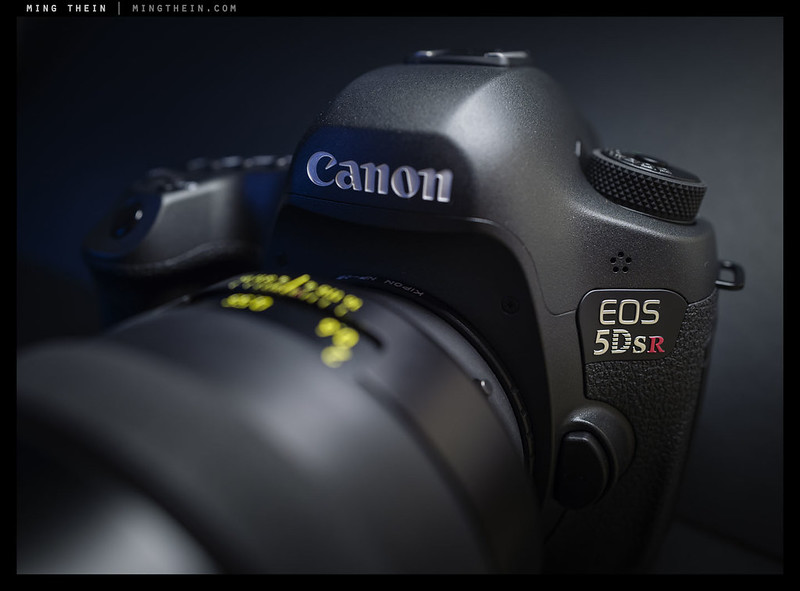
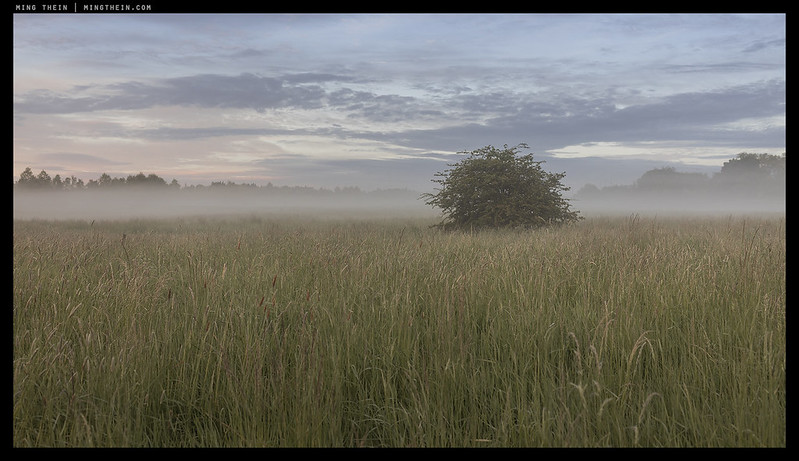
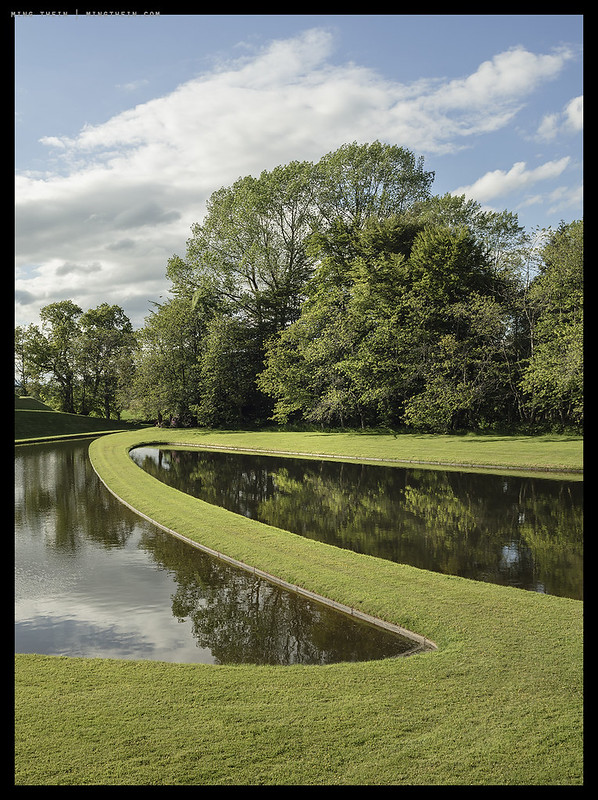
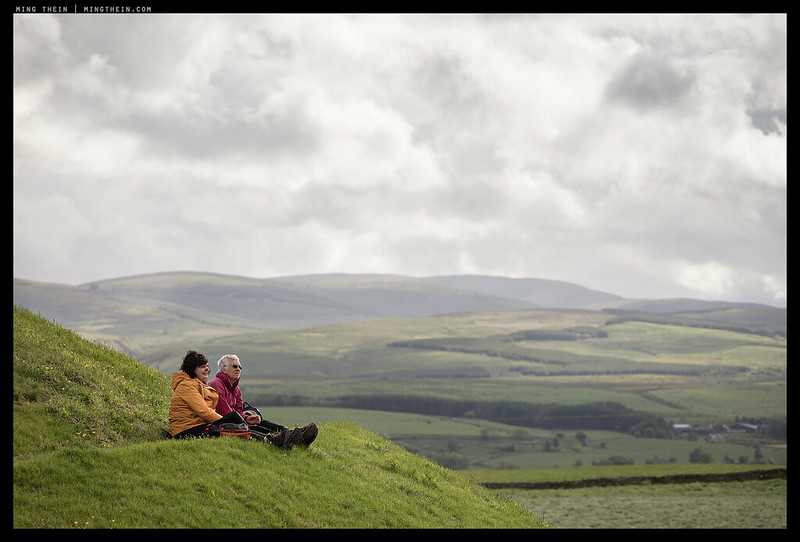
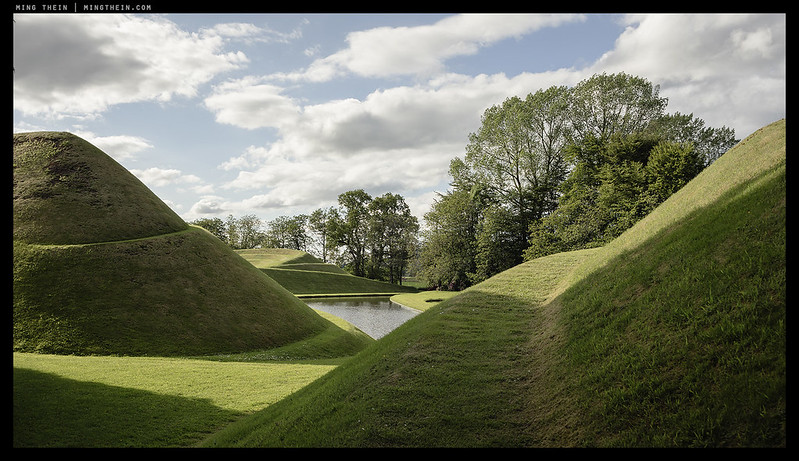

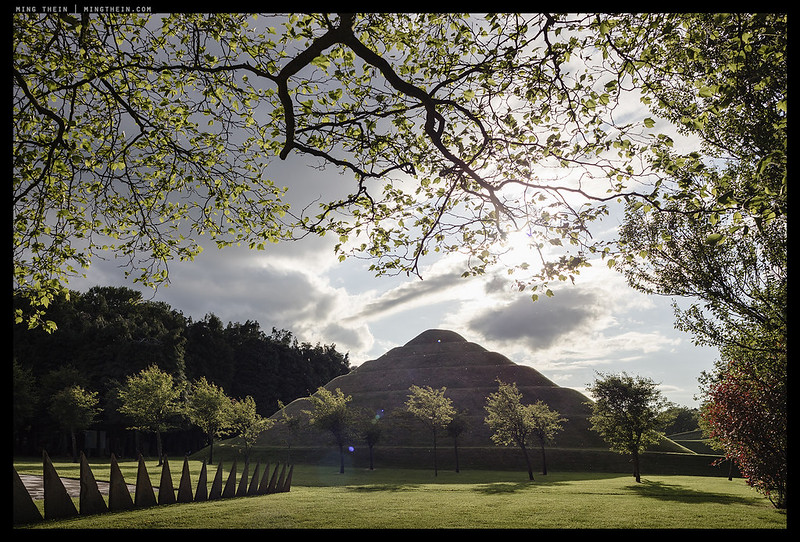
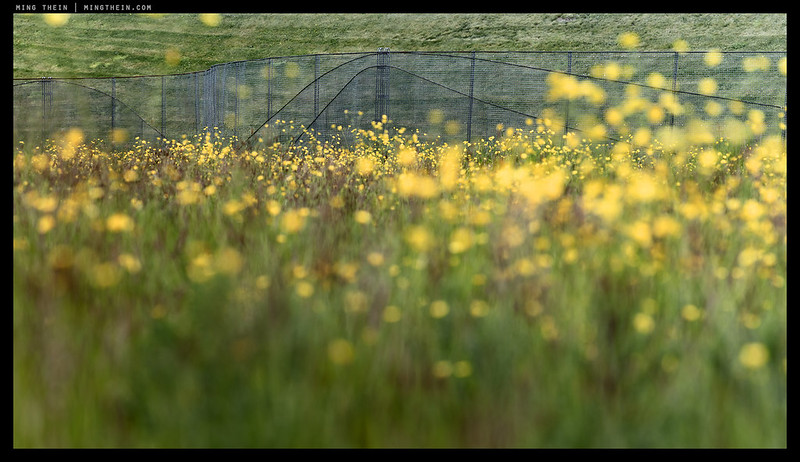



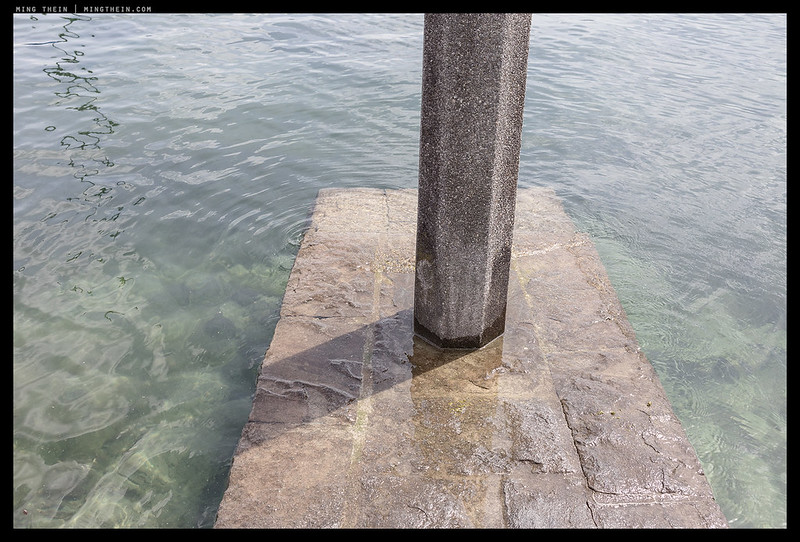
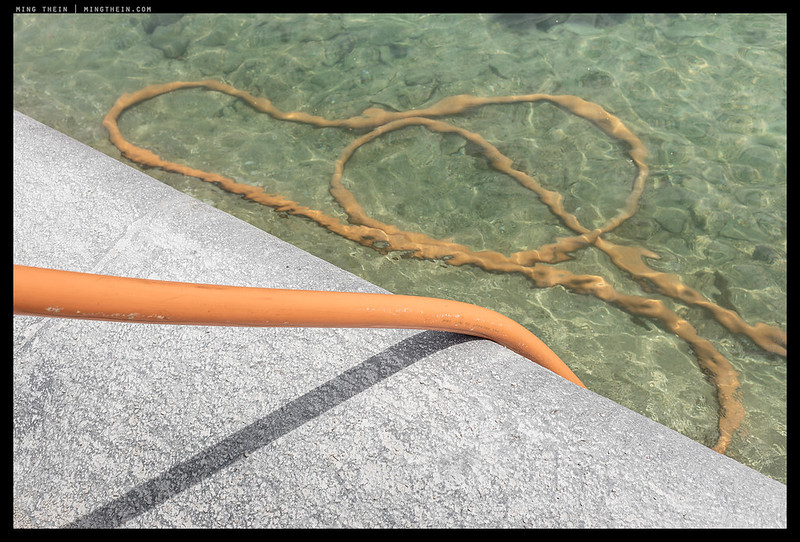
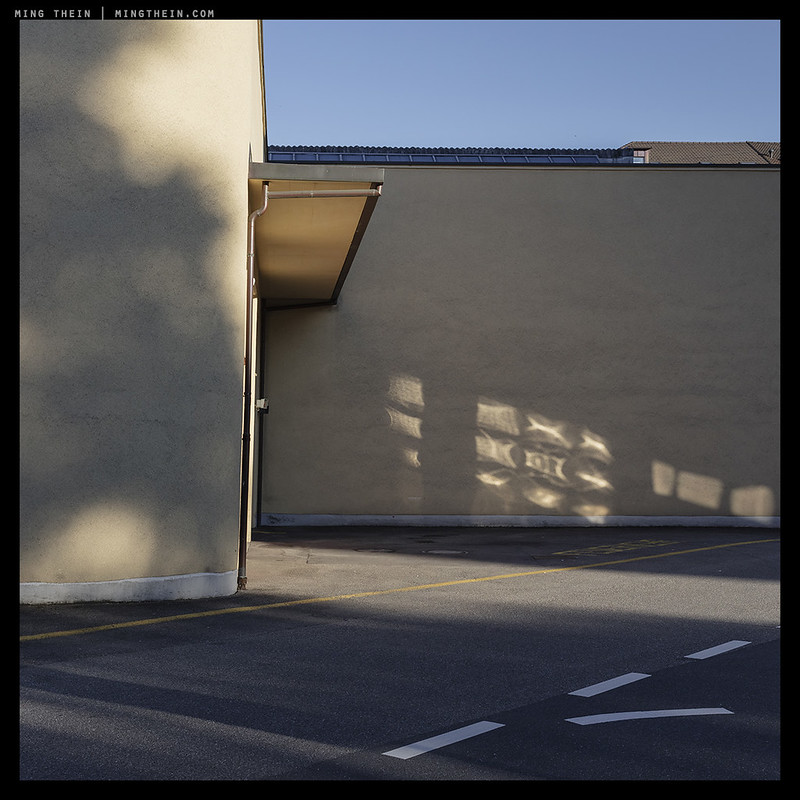
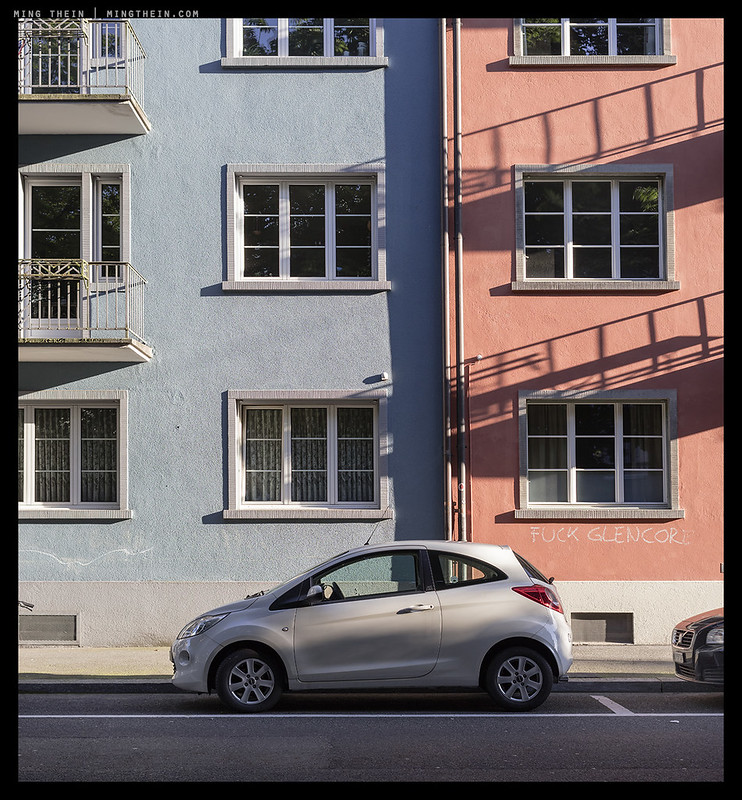
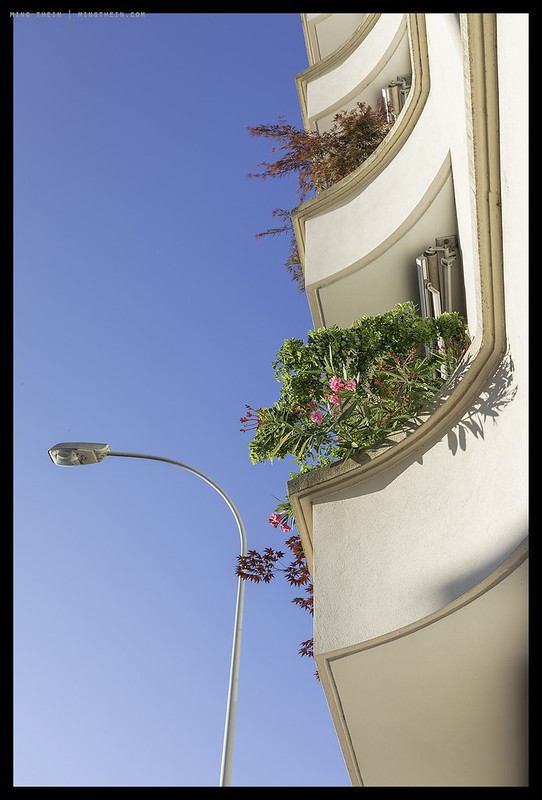
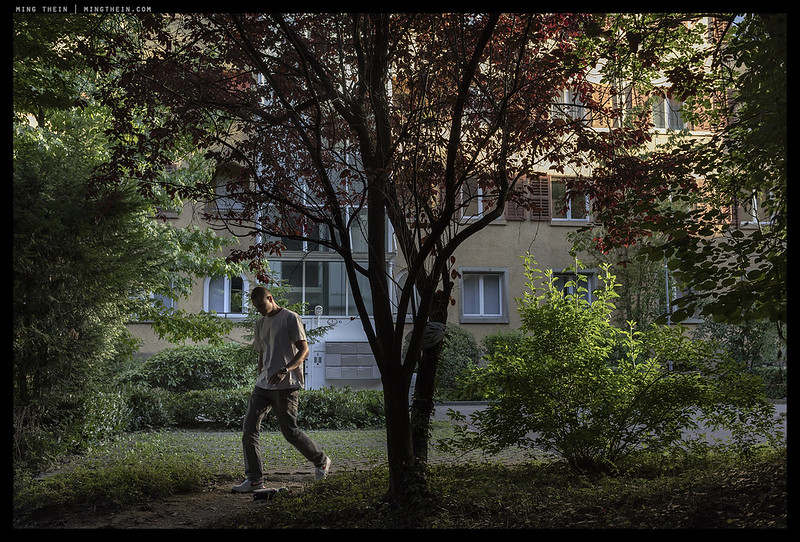
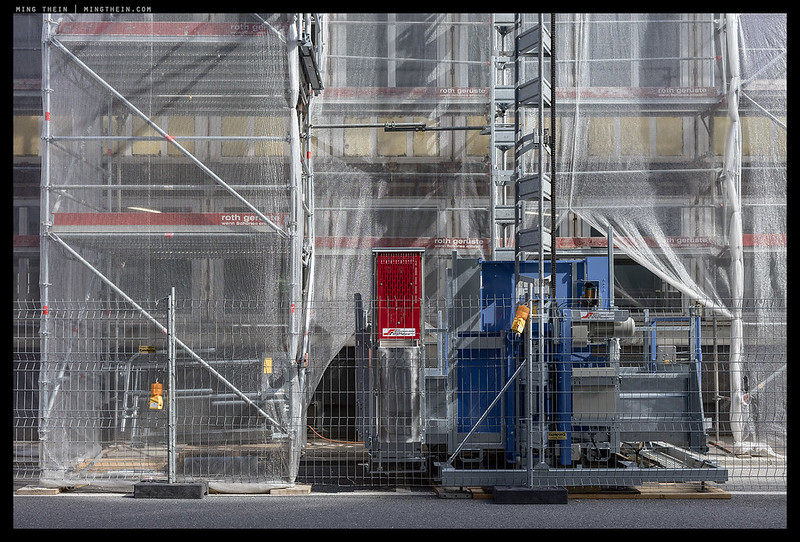
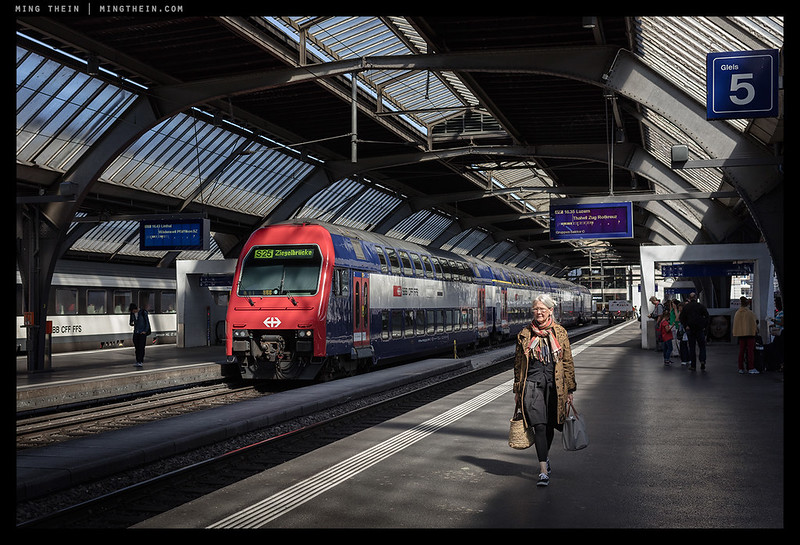
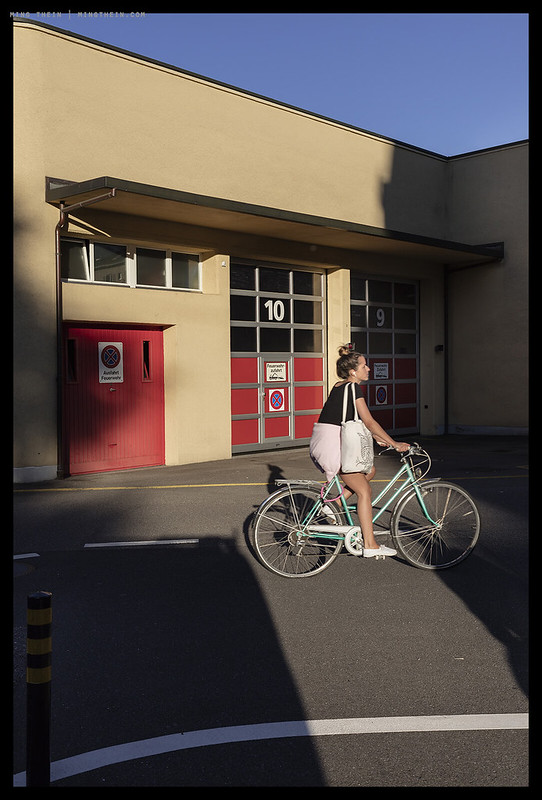






“And no, the Sony cameras are not an option because they have other serious compromises.” M.T.
Sony A7RII included? Thanks Ming.
Hi Ming.
Part II, please? ,-)
Cheers.
Hi Ming. I might have missed this in the comments somewhere, but regarding the “2.8/35 PC being really excellent”, how excellent is excellent? I would consider that the Canon TSE 24 is excellent, how does the Contax compare? I’ve been looking for a 35 mm shift lens forever — never even realising the Contax existed until I saw your review. The Canon 45 TSE is the closest focal length but it is only just passable on the 5D III, so definitely no go on the 5DSr (as I have discovered with some of my other lenses so far).
I’d love to see some examples, with crops from corners etc. if possible.
Cheers
It performs at the same level of resolution as my Nikon PCEs, and is better in some ways like micro contrast. However, given the age of the lenses now and the moving elements – your results may be dependent on your sample, too. I leave the pixel peeping stuff to the other sites, sorry – I just don’t have time for that. My priority is making images, but it might be helpful to know that my benchmarks are the Otuses.
Thanks Ming, no worries. I might have to take a gamble then looking at upwards of $3000 after shipping, duties and tax from what I have found. At least the Nikon PCE comparison gives me something to go off. Cheers
Whoa – I would suggest looking a bit harder; I paid nowhere near that for mine.
Really, maybe I should? I’ve only found them on ebay do far for $1700 – 2300. But import duties clearance, and 10% GST on top + shipping: that’s all in Australian $ by the way. I’ll try that Camera trader you have suggested.
The price range sounds about right, but import duties etc. are something else unfortunately (and unavoidable).
Sorry, one more thing to add to this long list: Are you using the Leitax adapter with the Contax? They look like the best option from what I have seen. I’ve been looking at one for an old Minolta lens that I have. They make one for the 58 1.2, but I have a 55 1.4 Rokkor so not sure if it will fit. I have tacked it on to a spare EOS bayonet and I can say it is pretty special considering it cost $50 — that’s on the 5DSr too. Can’t infinity focus without the proper adapter, but can see that it has great sharpness across the frame and really nice smooth out of focus areas.
No, I’m using various third party ones. Converting the mount permanently makes me a little nervous. Plus there’s no way I could get the Leitax stuff in time for that assignment. I can hit infinity with mine, but it required trial and error of a few adaptors before finding one that worked. Ironically, one of the ones that does not work with the 35 PC works fine with the 100-300 – go figure…
Hi Ming
I have Canon bodies with EF mount currently. In the case of manual lenses, is it good sense that one would be better off getting them in Nikon F mount with adapters, so that if one were to switch to Nikon in a newer generation, the lenses would still be useful? On a Canon body, is there any difference in optical performance between getting an Otus in F mount and using it with an adapter vs. getting a native EF mount lens?
Mukund
Adaptors are of course not ideal because they introduce the possibility of non-planarity, but it doesn’t make financial sense to buy the same lens in two different mounts, either. I have not seen any difference in performance so far between the Otus on my D810 or the 5DSR with the exact same lens; performance has been as expected (i.e. 85 a bit better than 55 and more obvious because of the additional resolution).
Ming. Excellent review (as usual 🙂 )
Quick question on 180 Lanthar. You said that you tried it on Canon with an adaptor but didn’t say whether it has enough resolution for 50MP sensor. I have this lens as well and I like it and would like to know whether it is suitable for higher MP sensor. What do you think?
Thanks Jayant. Yes, it has enough resolution for 50MP though focus is incredibly critical and delicate because the throw is a bit tight…
Excellent review, thank you. Looking forward to part II.
Ming what are your thoughts on this (and D800e) when it comes to comparing the Hasselblads 6×6 output? Comparing MP, resolution and sensors v MF film curious to know at what point you might use one over the other (if at all unless purely personal work)? The purist who shoots 6×6 fine art prints might stick with the Blad for instance!
Personal preference. Obviously the DSLRS are more versatile. I think this matches the resolution of the 6×6 in square format; the D800 is very slightly less.
Thanks Ming. I’m looking to do some fine art style of work and have a preference for 6×6 format. I noted the frame line concept in the 5dsr and given it 50MP this might be the way to go. As you mentioned though the lens will come into play. I have no need to own this camera at this point (that may change) so if renting initially what lens would you recommend in the L series that would be worthy of this body? Some versatility in FL would be handy and was thinking the 24-105 f4, though it may not be up to it!?
Thanks for any thoughts.
The 24-105 is definitely not up to it; the corners are soft and have some serious issues with CA. The 24-70/2.8 II is excellent, and the 24-70/4 IS is also very good except for a slight dip in the middle of the range. I have the latter, the 40STM, and the 70-300L.
thanks Ming. Thinking Ill rent the 24-70 Lii and also 85mm Otus.
About Matrix metering: In that mode the camera bases its weighting on all focus points that report “in focus”. Of course the one you’re using to focus, but also a not indicated set of additional points. You’re not suppoesd to think about what the camera does in detail, you don’t get enough information for more then educated guesses. Convenient if you’re shooting fast paced situations like reportages. Otherwise an additional reason to keep the hand meter around. 🙂 Giving the 5Dsr the 1Dx’s metering system(which can simply meter at the selected point) would have been more prudent in my book though.
For the 17-40 – that lens was designed with the APS-H cameras in mind, FF being about as exotic as the IQx80 today. And the 70-300DO has a very specific purpose as well: to be 1mm shorter then the max lens length allowed at sports venues and such at the time. Basically rules lawyering, with quality taking the second place on the priority list.
Not really convenient since it gets it so wrong – I’ve reverted to using center weighted, which at least is predictable.
No matter, the 17-40 happened to be lying around, and the 70-300L is pretty excellent 🙂
More great meticulous work in words and images.
I’m not going to invest in a canon rig but it’s always useful to stay up to date on the cutting edge.
Side note: shooting in Shanghai this week I see tons of new canons, nikons, digital leicas (all vastly outnumbered by cell phone cameras needless to say) and everybody’s clicking away…and not a tripod to be seen. I had the only one I noticed.
It just further illustrates the point that high res dslrs are rarely if ever actually needed by most of those who purchase em. Humorous.
Keep up the good work!
🙂
What system would you prefer for aerial work? I have used the Mark ii and iq160. I am considering the 5DsR for a aerial shoot next week. My prints will average 72″ wide. My concern is the pixel density. I have been able to get more sharp images from the Mark ii than the iq160. A helicopter vibrates a lot even when using a Gyro. Your input would be greatly appreciated.
Probably not the IQ160 for the reasons you’ve just described. Even with the D810 you need very high shutter speeds.
“The 5DSR produced better color and was more fluid to use in some ways (you can set the delay duration for mirror lockup, for instance)”
Ming, Nikon bodies implement this functionality with the “Exposure Delay” option, which on newer bodies is selectable between 1-3 seconds in 1-second increments. The mirror is lifted at the start of the configured interval. Exposure delay can be used by itself or in combination with timer-release; for the latter the mirror is again lifted immediately and the total delay to the start of the exposure is the Exposure Delay + Timer.
I know, but you need to press the shutter button twice to use that and it’s 0-3 seconds only. It’s a single press on the Canons, which reduces vibration.
Exposure Delay only requires 1 shutter button press to activate. However if you use it in combination with MUP then MUP requires the two-button sequence. Granted MUP is required to make use of the D810’s EFCS outside of LV, however the 5DSR doesn’t support an EFCS outside of LV and in LV it doesn’t support the new MUP delay functionality. So in essence the functionality/usability of 5DSR’s MUP delay is identical to the D810.
You don’t need MUP with EFCS though – the 810 should have defaulted to EFCS in LV, but still requires you to select MUP and two-press: fail. The 5DSR gives you EFCS in LV and thus doesn’t require either two presses (just use the timer) or MUP because the mirror doesn’t cycle.
Agreed, but the D810’s quirkiness regarding EFCS+MUP is separate from whether the 5DSR provides unique functionality with its MUP delay – since the 5DSR doesn’t support an EFCS outside of LV and because it doesn’t support the MUP delay inside of LV its MUP delay feature is functionality identical to the D810’s Exposure Delay feature – they both provide the ability to raise the mirror and keep it there for 2-3 seconds with a single shutter press but neither supports an EFCS with that functionality.
Btw you can work around the D810’s two-button MUP requirement by using the interval timer, at least when bracketing, which is how I used the D810 when I had it. It might also work outside of bracketing as well.
Jim’s article confirms EFCS works with the intervalometer even when not bracketing (http://blog.kasson.com/?p=10343). What’s nice is you can set whatever interval delay you want and so after you start the intervalometer you wont have to touch the camera again before the exposure starts. Btw the ability to use the intervalomter in MUP mode is new to the D810; previous bodies including the D800 would grey out the intervalometer menu when not in a regular drive mode. They likely added MUP support specifically to support no-touch EFCS operation, especially when bracketing. For fast access you can add the intervalometer to your ‘My Menu’ and then configure the Fn button to trigger it.
Hey Ming! Thanks for your excellent (as always) review. Few questions. Are you finding any color noise or banding in the shadows? This tends to be a chronic issue for other Canons. Are you finding the sensor to be more highlight biased or shadow biased? How is that leading you to expose the camera? And last, could you elaborate on the Canon’s color advantage? Have you noticed it anywhere besides foliage?
Luckily, Canon cameras have an amazing support ecosystem for video that should help a great deal with live view shooting. LCD loupes are a dime a dozen–hell, you could even strap an external monitor on there if you were so inclined.
There is some if the shadows are pushed heavily. I’d say it’s pretty neutral in terms of exposure – neither one nor the other. I haven’t shot enough other stuff with the Canon yet to say more specifically re. color.
Hi,
in your review you describe your workflow for getting the best quality image from the camera – but it contains a small Nikon specific step that you can remove:
You wrote that you use live view for critical focusing. On the Canon you can trigger the shutter directly from the live view because it has an half electronic shutter that is employed if you are in one of the two live view silent shutter modes. Contrary to some other manufacturer’s implementation this electronic shutter does not incur a bit depth penalty on the A/D conversion – thus it is a valid option. This results in even less mechanical movement than using mirror lockup which closes the mechanical first shutter curtain which then has to be opened again to take the shot.
You can trigger the e-shutter directly from the Nikon in LV, too. The drive mode has to be put in MLU but the mirror doesn’t actually move. Have I confused something here?
It’s about the mechanical shutter itself. On Canon if you enable mirror lock up you end up closing the first shutter curtain and this in turn is being used to determine the exposure time – but also incurs more mechanical movement during the exposure. So it is better for your Canon 5DsR to not enable the mirror lock up if you are using live view because there the “Silent LV shoot” mode does determine whether the electronic first shutter curtain is being used or not (see page 266 in the camera manual pdf) – with both silent modes employing the electronic first shutter curtain…
Ah, I understand – I’ve tested this, too. If you’re in LV already, the camera doesn’t cycle the shutter or mirror even if MLU is enabled – you can’t hear anything moving til the end of the exposure.
Hi Ming. Thank’s for your honesty descripción.
Were the Otus Nikon’s mount or EF mount?
Thank’s again
Nikon.
I don’t know if it is you, me, or the camera, but most of the pictures in the article really seemed to “pop” for me, compared to what I am used to from your style (not a put-down on your style). It must be me since you did not mention any unusual image quality attributes and I doubt if you changed your style. I will have to look at them again tomorrow.
Could also be quality of light. I shot all of these above 40deg latitude; a lot of what I’ve shot in the past has been in and around the tropics, which makes an enormous difference in the incident angle of the sun…
The last three definitely were shot in Switzerland 🙂 Scaffolding company, train and platform style, and road signs are unmistakable 🙂
😉
Hi Ming, Great images! Don’t think the camera matters. 😉
I think you should have a second look at the last sentence in the second paragraph. “That said, I’m sure it’s only a matter of time before some forum keyboard warrior ‘expert’ I’m now on the Canon payroll.” Seems some words got lost in between.
Nope, it doesn’t. Yes, missing ‘thinks’ or ‘asserts’! 😛
So nice to see pictures from Switzerland (one of the best countrys to live in), even more so when they are made by an expert like you!
Hope to see you once here!
Warm greetings Lorenz
Thanks!
Superb reviewing skills, as ever, thanks for the lucid, honest and balanced review.
I am interested in the 5dsr but like manual focus. How did you find focussing the Otus and 135 APO Sonnar lenses in the viewfinder?
Thanks, Paul
Thanks. Honestly…not easy. The finder is large and bright but lacks snap; you’ll need an LCD magnifier.
Thanks, thought as much.
Perhaps, also, you could comment on something I’ve been finding with online samples. It’s the one thing holding back from ordering and I see it as quite a crippling weakness that I can’t look past. Namely, the way the camera seems to render steep transitions in dark luminance, tone or colour to light tone, colour or luminance. What I am seeing is a very rough, corse, ugly noisy rendition that I find particularly off putting. It seems colour gets muddled in these transitions too. That is when these transitions occur over a small area. If tone, luminance, colour are even, homogenous or have a long transition then it seems to look wonderful, even medium format like.
Do you have an example? It could be a consequence of poor postprocessing or exposure.
Very interesting review…as always. As a D800E user shooting 90% of my work on gardens and landscapes I picked up on your comment about how the Canons greens are better than Nikons. As botanical subjects are top of my list how significant is the difference? Sometimes I am forced to shoot in midday bright light and feel the D800 could do better with regards to colour and highlight control. Deep shade on a bright day is also a challenge.
I’d say it’s significant. The D810 is quite a bit better than the D800 for color, and by a lot for highlight control. Oddly though, under controlled studio lights, there’s practically no difference that I can see and I prefer the D800E because it has slightly cleaner shadows (highlights are less important since you are fully controlling the light anyway). The 5DSR isn’t as good on highlight control, but better still than the D810 on color. So – I suppose you need to decide if the color accuracy is something you can correct for and highlights are more important, or whether that gain is worth switching/adding systems…
Ming, a couple of technical points.
The large pixel count doesn’t affect the noise much because the electronics has got so good that photon shot noise dominates. It’s a simple handwaving argument then that noise decreases as sensor area increases; only a relatively small area is lost to the boundaries between pixels (although of course that area does increase as the number of pixels does). There is some “read noise” from the electronics for each pixel, but it’s apparently not enough to make a huge difference. Hence the modest ~2/3 stop advantage of the A7s over the A7.
Also, I don’t know whether your example with the mesh building site screen was supposed to convince me that aliasing isn’t a problem, but it didn’t. At Flickr’s large size of 1600px I still see a little moiré. But, more than that, I see plenty of aliasing which is not moiré. Not all aliasing is moiré.
It isn’t the boundaries or the read noise, it’s also the area occupied by circuitry, the quantum efficiency of the design, and the microlenses…
Moiré certainly seems to be an issue for the camera, see the studio test scene on dpreview. I don’t always agree that aa filters are a bad idea… usually, but not always!
Stopping down past the diffraction limit can mitigate this somewhat.
This is a very interesting article (written 6 years ago!) about why 80 megapixels isn’t enough for printing:
http://theonlinephotographer.typepad.com/the_online_photographer/2009/02/why-80-megapixels-just-wont-be-enough.html
To summarize, his main argument is that normal viewers (ie. not pixel-peeping photographers) can tell the difference between a print with resolution of 30 line-pairs/millimeter and 15 lp/mm. An 8×10 print at 30 lp/mm has 8x10x25.4×25.4x60x60 or 186 megapixels. The author is a respected printer who is on the objective side of the equation and tests his assertions, so if what he says is true, then there’s still plenty of headroom for more pixels for perceptibly higher quality prints … assuming our printers can keep up.
My Canon Pro-10 printer has 8 colors, and can lay down 2400 points per inch. If it has to use all 8 colors, that’s only 300 dpi, or 6 lines per millimeter. The stock Epsons aren’t much better. Ming’s 720 DPI Ultraprint process (which is gorgeous in real life — you should all try to get a look at one) is around 15 lp/mm.
The obvious question to ask is if we can’t print that high of a resolution, why bother with more megapixels? That’s a fair question, but there are other printing technologies out there than color inkjet. Or one could print large and then optically reduce a print by 5x to get to 30 lp/mm. I think there’s still plenty far to go if you really care about ultimate print quality.
The conversion between ink dots and line pairs isn’t linear; you need many ink dots to make one line pair when you take into account color and dithering and the fact that print is simply not ordered. We’re going to need a shift in technology (and paper, too – we’re nearly at the size of the underlying fibres on many media) before we can get any more perceptual resolution. Contrast also plays a non-obvious role in all of this, too…
Hi, Ming – how did you like the 100-300 Vario-Sonnar? You mentioned indirectly that it was a “pleasant surprise;” I’m thinking of seeking one out and would love to hear your thoughts – thanks!
Pretty good on first impressions, but I haven’t had a chance to shoot it properly yet. At least as good as my 80-400 VR.
Hi, Ming – I must apologize for my poor manners – I forgot I had posted this question to you, and remembered just now – so thanks for your reply!
” Regular readers will know that I only review things that are interesting, and to be interesting, they have to expand the envelope somehow “…… Hi Ming , As a bit of a digression from the Canikon debate and the other end of the camera food chain, perhaps you might be tempted to do a review on the LG G4 – just wondering if this is just the tip of the iceberg the way smartphones are heading ?
Nope, not tempted at all. I won’t be reviewing phones.
Ming,
This line in your review intrigued me: “You can handhold it to the same or slightly longer shutter speeds than the D810 – I’d say 1/2x-1/2.5s is safe – … ” My question is: what shutter speed do you think is safe for hand held Zeiss glass on a D810; e.g., a 135 APO?
Ron
1/2.5-1/3x. I’d use the 135 at 1/350 and above.
Lovely colours – the first image of the wheat field and low-hanging mist and the post in the shallow water really show the beauty of the camera. Unfortunately, I now want one.
Thanks – well, I could show you some similar but wider images with the Leica Q…it isn’t the camera 😉
OK, we can agree to disagree. 🙂
I looked at the Leica Q images – and I have looked at other images on your site. And I have looked at images on other photographers’ websites. And often I can tell what camera was used to take the shot. And I stand by what I said – that the colour rendition from this Canon is gorgeous.
I don’t disagree with that though – the greens from the Canon are much better than the Nikon. I’ve calibrated them to render the color chart the same, but that doesn’t mean each wavelength responds linearly or identically with luminance…hence the difference in tonality.
Nice to finally see some pictures from the Lucerne workshop – I hope you’ll share even more of them in the weeks to come 🙂
As for the review (all of your reviews, really): I find it very useful and refreshingly honest compared to all the unreflected bashings/praises one usually finds on photography-related blogs.. Thank’s a lot for your work!
Thanks, but there was no Lucerne workshop in the end. Almost everybody pulled out after the Swiss Franc depegged and costs went through the roof… 😦
Those other blogs are reliant on advertising dollars to survive. Editorial integrity is at the expense of revenue…I have precisely zero ads.
Sorry to hear that about the workshop. I guess it’s understandable, especially if a lot of the participants were from the Euro-area. Still, very unfortunate that international economics and politics interfered with your business in such a way
I hope you could enjoy your time in Lucerne nonetheless – I think it’s one of the most beautiful cities in all of Europe. Seeing your photos and your interpretation of these familiar subjects is very interesting. Did you happen take a look at the new building of the University? With its angled shapes I think it’s a building that fits right into your style of architecture photography.
Happens all the time. Right now I’m struggling with a weakening local currency that’s lost about 25% value in real terms in the last year…affects everybody, though.
Yes, I did really enjoy Lucerne 🙂 Didn’t get a chance to visit the University though.
Once again, the gold standard in review process and writing. This camera and the D810 are forever way beyond my need and means, but I read every word and await Part 2. It’s not just salacious interest — I reserve that for automotive design from the ’30s through the ’60s. It’s just satisfying to read a critique which is so meticulous and objective.
Thanks!
Praises as always for your review work. The manual focus problems of these DSLRs are inexplicable.
However, the autofocus on the 5D is something reputed to be something special.
I rarely see outbound links here. Do you have a policy? Anyway somebody named Michael Tapes posted an impressive video concerning autofocus performance of the 5DSR over at The Online Photographer, specifically using the Canon 600mm f4 handheld – he’s bird shooter. The results are mind-boggling, frankly. Thought you might find it interesting.
Thank you.
Outbound links – in the comments, people are free to post whatever. I don’t bother in the body because if somebody else has said it, I don’t need to say it again or draw attention to it.
I suspect the AF is pretty good given I needed no fine tune on any of the lenses I tried except for an ancient 17-40L, but then again I bought this thing to use with MF Zeiss glass so I guess for me it’s academic – hence the comment of leaving it to people better qualified 🙂
As far as the MF Zeiss, will you be keeping the 100-300 and 35PC? Is there any other Contax that you would find usefull? How does the 100-300 compare to the 70-300EF? If you didn’t have the Nikon 21 would you want the Zeiss 21 2.8?
Not sure about the 100-300; practically it’s not that easy to use because it really requires a tripod. The 35PC definitely. Not had a chance to try the other Contaxes; they’re not exactly easy to get here.
I actually sold my Zeiss 2.8/21 for the Nikon 20/1.8 because the only thing I use that lens for is tight-confines documentary work, and AF and another stop are far more useful.
Excellent review, thank you, and superb pictures, especially of my native and beloved Switzerland. I’m sure you’ve nailed the 5DSR’s advantages and drawbacks with your usual precision and insight – not that I have any intention of buying this thing, or need to, or the ability or discipline to use it. I know that British cloud in ‘Spot the whimsy’, by the way – it’s the one which comes and hovers right over my house whenever I finally get my act together to photograph some of the camera gear I’ve bought unnecessarily and unprofitably over the years…
Haha!
I shoot macro from 1x to 5x hand held, and was curious about the 5Dsr cropping modes. Currently shooting with the 70D (was using the 1D MKIII but the weight of it and the MP-E 65mm macro lens was killing my wrist) and I like the “hardware crop” but there are times when I’d like to get more in the frame at a given magnification. I don’t have a problem with getting a lot of detail shooting hand held (pretty much using the flash to freeze motion, plus a few tricks to steady the camera). I read what you said about the crop modes, just wondering how easy it would be to use them in the field.
Regards,
John Kimbler
http://dalantech.deviantart.com/
Perfectly easy in the field, but I don’t think the MPE would be so easy to use because of the nature of the lens itself?
The MP-e is not a problem -these are all hand held: https://www.flickr.com/photos/dalantech/
Impressive – I assume these are with a flash…
Hi Ming. Thanks for the review and I’m looking forward to part 2.
I’ve recently received my 5DSR and will use it exclusively with a MPE 65mm lens and MT24ex twin flash (to photograph jumping spiders for my website).
It is quite a big upgrade for me from my previous Canon 60D. I’m very happy with the quality of the images but it is going to take a while to get used to the smaller size of the subject in the optical viewfinder. Unfortunately using a Zacuto and live view to focus is not an option with handheld stacking (the screen goes dark for too long after a frame and I lose the next point of focus). Not sure if there is a way around it and I’m considering getting an optical viewfinder magnifier. Have you ever used or tested one?
All the best
Vida van der Walt
Nope, sorry. I would suggest using a tripod but that’s probably not very practical with jumping spiders…
🙂 Yes, not an option with jumping spiders. Thanks.
Hi Ming, nice succinct review. I think the days of small mp increases are less and less a justification to buy new gear. FWIW, I just recently tested my 810 w/Otus against a Hasselblad CFV-50c on an Alpa w/Rodie glass. I printed a large image of each. Yes, the MFDB was a more pleasing image (that Nikon color again!) but it took a 3X loupe to discern any resolution difference.
I think if you wait a few months there will be no need to get the Canon as Nikon will have something to announce, if for no other reason than bragging rights. After my tests, I’m planning on staying with my current setup for the foreseeable future.
Still looking for that WA Otus, though.
Regards,
John
Thanks. Yes, it’s really hard to see the difference unless under absolutely ideal circumstances. I bought the canon not just for the resolution, but for access to lenses that don’t exist for the Nikon system.
Well, that is very understandable.
Thanks for another comprehensive review with lots of image samples and clearly articulated annotation. With that said, this is just my opinion due to the lack of side by side comparisons of 645z images, but for me, there is just something about the 645z that I haven’t seen with any other non MF camera as of yet, including the new Canons. Your Canon images look great but you are so talented and skilled, given any camera in your hands, the images will hold up on the high end of the spectrum. The Canon and Nikon images look good but your 645z images just had something special about them… hard to explain but they were over the top. I briefly owned a 645z for studio work but got frustrated with the tethering deficiency so I sold it. Time and time again I miss it and wish I hung in there.
Could it be subject matter? I’ve not shot any similar subjects yet, and my lens lineup isn’t complete.
The Canon have maybe a bit more DR than you think : http://www.clarkvision.com/articles/canon.raw.processing1/
It has more than popular opinion holds, but not more than the Nikon.
Crushing blacks can obfuscate noise but it doesn’t improve DR.
Makes it worse, if anything…
645z shooter here. Honestly even if the 645z was only say 15-20mp I’d still use it, as to my eyes the 50mp 5D’s look exactly the same as the 21mp 5D’s, just with more resolution. At least the 645z gets you an upgrade in other areas of picture quality and a different look in general. Thanks for the review!
I would say that at web resolution, the iPhone also looks the same…
thats a silly reply and is why I said the 645z gets you upgrades in different areas. Just for starters the 5D (or iphone!!) does not have the enormous DR, the beautiful gradual rolloff DoF, the tonal qualities of a 645z or any medium format for that matter. 5Ds/r is just a higher resolution version of the same old camera that has already been copping flack for lagging behind in iQ to the other brands.
No, judging a 50MP camera from web jpegs is silly. Nobody sensible buys it for that.
Hi Ming
Can you add some full resolution samples in your next review part, on Flickr? Or at least 1:1 crops. There are plenty of samples on other websites, but I’m keen on seeing what you get from it at 1:1. 🙂
Mukund
There will be 1:1 crops but no full size images. I won’t post rubbish images and the internet has no respect for intellectual property.
you are missing the point completely.
Why don’t you explain it then?
I’m not in the market for this product but as always, very much enjoyed the read and especially the photos. Your right though, Flickr is just having it’s way with your work. Still they’re awesome shots. I hope you will toss us a full size bone or two in part 2. Also, I used your 250/.02./0 (actually backed it down to 200) on one of my hi-rez sensor shift .orf files and damn, I must say that I was pleasantly surprised at how great the sharpening result was…thanks for the tip!
Thanks. For the EM5II HR files you may want to try 150/0.4/0 then 100/0.2/0.
My goodness that worked amazingly well especially down-sampled. THANK YOU! 🙂
😉
Ming, can you please explain this sentence: “Put quantitatively, I’d be using 250/0.2/0 sharpening instead of 160/0.2/0 for an optimal image (a ‘good’ camera with AA filter like the D750 would be 250/0.3/0, for comparison).”
I am guessing this applies to ACR and PS users? I process with Lightroom & Elements currently.
Cheers and best wishes to you and yours 🙂
Yes, it’s for PS users. Those are smart sharpen settings in amount/radius/threshold.
What is a good smart sharpen for the 645z files?
Depends on the lens actually. Anywhere between 100/0.2/0 and 300/0.3/0.
Really Great review. I strongly recommend you give 1635/4 IS L a try. of cuz, 17tse and 24tse is one of the strength of using EF system.
I were surprise you did mention on the differences on color output ( only about outdoor, how about indoor? ). and, is the auto-wb an issue?
what would you think if it is pairing with canon 100L macro?
I’ll check it out. Color output – even after calibration, there are biases because you only adjust for hue, not luminance response for a specific color; this can make a huge difference to to tonality even if two cameras render an identical color chart. The 100L I tried had very visible longitudinal CA, which is a deal breaker for me.
Thanks for the review. I’ll admit to be a fast lens/fixed max aperture snob, so I wonder: what made you go for a 70-300 L, rather than one of the 70-200 L? Is it about the extra range or about image quality?
Size, weight, and yes, a bit of extra range. I almost always work stopped down so I’d rather have a lens that performs well at my usual apertures than one that is a compromise for speed. Of course the Otuses are not, but they’re also massive…
Thanks Ming for that review. Your writing makes reading other reviews superfluous. The depth and honesty is much appreciated. Canon might not have the best numbers techwise but I am just pleased by its colors, overall IQ and intuitive handling.
Welcome!
Hmm. I think I’ll stick with Plan A and get an A7RII – the lenses are light, designed for high res sensors, and are keenly priced for how good they are – although the Leica Q interests me a lot. In fact, I was just about to buy one yesterday but they’d sold out!!
I know you’re pushing the boundaries, but the 5DSR is just comes across as a lot of resolution that you can’t actually see unless you view at pixel level on a computer screen or stand so close to a high res print that you can’t take in the whole composition. It’s handy to be able to crop for ‘reach’ though. I like my pixels as much as anyone, but 24 MP still seems like more than enough to me (i.e., to serve any actual artistic purpose I might have). As you say, the 5DSR is basically just a lot of ageing camera technology with a new, densely packed sensor, and the lack of technical progress elsewhere makes it hard to exploit what the sensor can do.
Gear talk aside, I really like the colours in that first landscape shot above (after the product image), it caught my eye in your Flickr feed. So few photographers seem to realise that saturation sliders also move left! 🙂
Or, you print large – which I do. But even for me, it’s a very niche tool. That said, it seems much easier for me to get the colors ‘right’ for landscapes with the Canon than the Nikon. No idea why.
But if you print big, you need a larger viewing distance to take in the whole composition without moving your head around. I’ve never had the opportunity to experiment with REALLY huge prints, but forced to guess I’d say that if the image was captured using a 24MP sensor, and you can see the pixels, to the extent that it looks crude, then you’d be standing far too close (i.e., you’d only be able to take in a small part of the image at that distance).
I dunno. I want more resolution too, but I’m not always convinced of the need for it!
Yes and no. The spatial frequency of detail of the subject makes a big difference, too. A minimalist long exposure seascape with 12mp will look fine up close at 40×60″, a forest will not with 36MP – even from further away.
I have always been annoyed by not being able to close in on details of large prints in photography exhibitions. It just feels like the image was blown up too large and I have to make the effort to find an optimal viewing distance to enjoy it. I haven’t seen any of MT’s prints but the comments from those who have don’t feel surprising at all.
Trust me, I’d be the first one to pull a print I didn’t feel good enough. And I have silly standards :p
Finally a Canon review! 😛
Lookin forward to seeing part two and how well it performs agianst the E-M5’s pixel shift mode. I suspect the Canon is far more usable since you can capture moving subjects. Oh, and have you been able to test the EF 11-24 F4? They(the internet) say it’s a great lens.
Only briefly, and not enough to form any meaningful conclusions. For something that wide I really need perspective correction.
Ming, what I may have said about some images of yours a few months ago – just does not apply.
The ones I see are fuckin excellent! It seems as if you really had a roll whilst shooting that series!
The camera – it does not matter in the slightest for me….
cheers
tom
🙂 it’s just a tool in the end. But it has to make you want to shoot…
As someone who has a D810 and shoots only as a hobby I really enjoyed your review. Reminds me that I already have reached the point of total overkill 🙂
I guess the D810 will serve my needs for years to come. The only reasons for me to upgrade the body would be if Nikon made a mirrorless camera (function-wise similar to the D810) with a proper EVF and hopefully the same mount so I can keep my lenses or if they made a 100-120 MP camera with proper downsampling to 25-30 MP already in the camera. This should look gorgeous and should also deliver an unmatched pixel acuity.
Where have you been shooting the photos by the way? It looks very european to me.
🙂 Like I said: a very specialised tool for a very small audience, overkill for everybody else. Yes, the images were from Scotland and Switzerland.
Wonderful images and review Ming! Isn’t the 17 TS too wide to maintain a natural perspective? Best Wishes – Eric
Yes, if you incline the lens at all – hence the importance of shift and keeping the thing flat…
Ming, your forewords are containing lots of excuses! And again, if one wants to use this new DSLR properly, he must use it with LiveView over an Zacuto or similar magnifiers! Sorry, but this ” helping tool” , is an NO GO for such an brand new expensive “pro DSLR! And, I am not the only one, saying it!
And your posts are continually and deliberately inflammatory and with a pro-Sony agenda, but this is the first time I’ve warned you about it.
Ming, please get me wrong, I like your excellent reports and images very much! I personally don’t care whether or not, the Nikon D800/810 or the Canon 5DIII/5DSR, as you’ve stated, not functioning with the focusing screens. For precise focusing with the manual prime glasses, the LiveViev must be used, fixed as displays permanently onto the back of the cameras, and therefore must be used with an special magnifier attachment! This is silly for an pro DSLR and this is my major complaint! The Nikon D750 is in this matter, on the right track
By the way, you are mentioned now the brand name Sony, I have mentioned in my answers, the word challenger! But that’s fine with me! 😄
And don’t forget what kind of hearts are beating in your Nikon’s! 😂
I wonder if we read the same article. It’s quite clear to me that Ming does not recommend this camera to anybody who is NOT willing to buy expensive tripods, expensive lenses and LCD magnifiers. It’s a very specific tool for a very specific purpose. I don’t understand your negativity at all.
I’d call this a honest review. No pushing for ‘buy-clicks’. I am pretty sure Canon can improve the accuracy of the AF confirmation and bring a kind of focusing aid into the OVF with the Mark II: The focus confirmation should be supported with a focusing balance, showing distance and direction to perfect focus on pixel level.
Hi Rainer,
from your name and your English I conclude that you are German, like me. Your posts are always negative and most of all extremely aggressive in a typical German know-it-all manner. These posts don’t help because you are obviously not interested in a constructive exchange of ideas. Relax man! And be a bit more polite and unpretentious, please!
Who builds his house near the street, has many masters! I am an very freindly and peaceful person, and have not any negative nor agressive attitudes!
Well, properly using a 4×5″ or 8×10″ camera, a professional quality tool, requires a magnifier loop, also a professional quality tool. So I’m not surprised to read that you need optical magnification if you want to realize high resolution results, ones that take full advantage of a 35mm size sensor that pushes the envelope.
Modern dSLR lenses seem to definitely handle high resolution at the cost of jamming up so many elements to correct for everything. I keep feeling that lenses with high levels of correction for megapixels acuity will eventually flatten out perspective, therefore widening the gap between “fullframe dSLR” and Medium Format. From what I could read on MF lenses spec, they all seem under 10 elements. Now the Otus55 has 12, Sigma50 has 13 while the standard lens for the Hasselblad H system (the 80?), the canon 40STM, the ricoh GR has 6…
Number of elements has nothing to do with resolution. More elements are theoretically to correct for higher order aberrations, however the more air-glass interfaces, the worse results tend to be because of transmission losses at the boundary unless the coatings are exceptional.
I’m not surprised about your findings with the Canon 17-40mm ƒ/4 L. It is already often a poor performer on the Canon 5D Mk III (and Mk II). It is particularly bad on the sides and in the corners. If I make the jump to the 5DSR, the 17-40 is the lens I need to ditch.
Was an old one a friend had lying around – figured might as well try it and see…
Great review. As a Canon user, I can confirm that the 17-40 and 70-300 DO are dogs as far your level of expectations are considered. The newer 16-35/4L is the better ultra-wide zoom, along with the 70-300L which you have also tested.
Thanks!
If you want the lens rated as the best wide angle lens on any system and you’re a guy that can afford a Zeiss Otus lens, skip the 16-35 and go straight for the Canon 11-24 f4L real eased a couple of months back, Canon created it specifically to showcase the best their lens division was capable of. This isn’t a dig at the 16-35 f4 as I own one and it really is very good but the 11-24 is stellar.
Great review, it’s been difficult to find a non biased review and it’s impressive the amount of people you take the time to reply to in the comments section.
Thanks. I need something with movements if it’s going to be that wide, so I’d probably go for the 17/4 TSE.
Thanks for your review. I am intrigued by the camera, but don’t print large – I would get more mileage from a TS-E lens or a course. Canon live view with magnification really is nice, isn’t it? The only LCD issue I wish Canon improved with their full frame models would be to have a tiltable screen, handy when your camera is way high or low on the tripod.
Here’s to good shot discipline even for a 20 MP camera. (putters off to calculate where I need to locate to get best composition for fireworks and landmark building – if the event location allows tripods in the first place. I was wanting fireworks and gibbous Moon, but cloudy weather and time of Moonset aren’t amenable)
The 17 TS-E is my secret weapon.